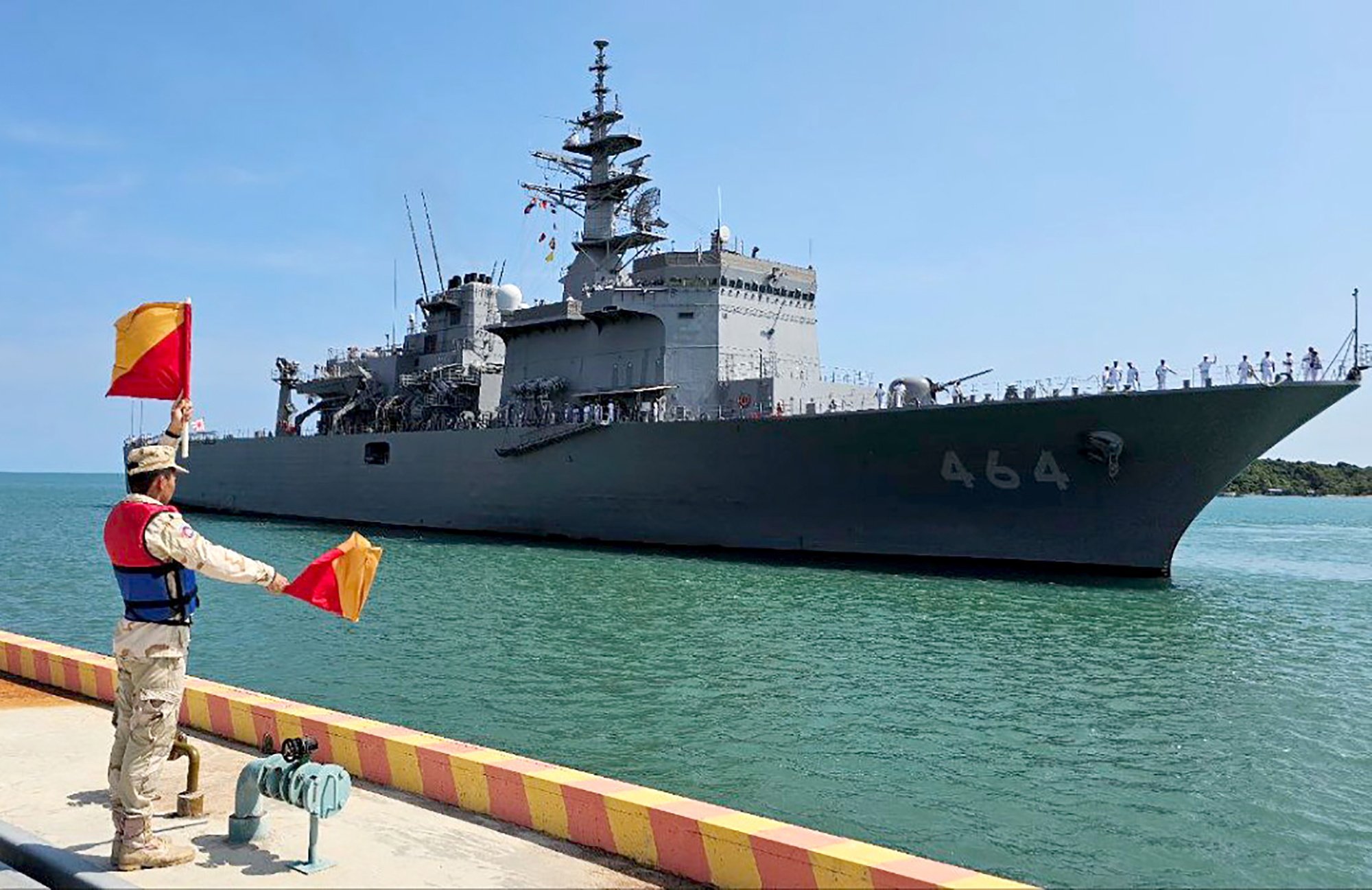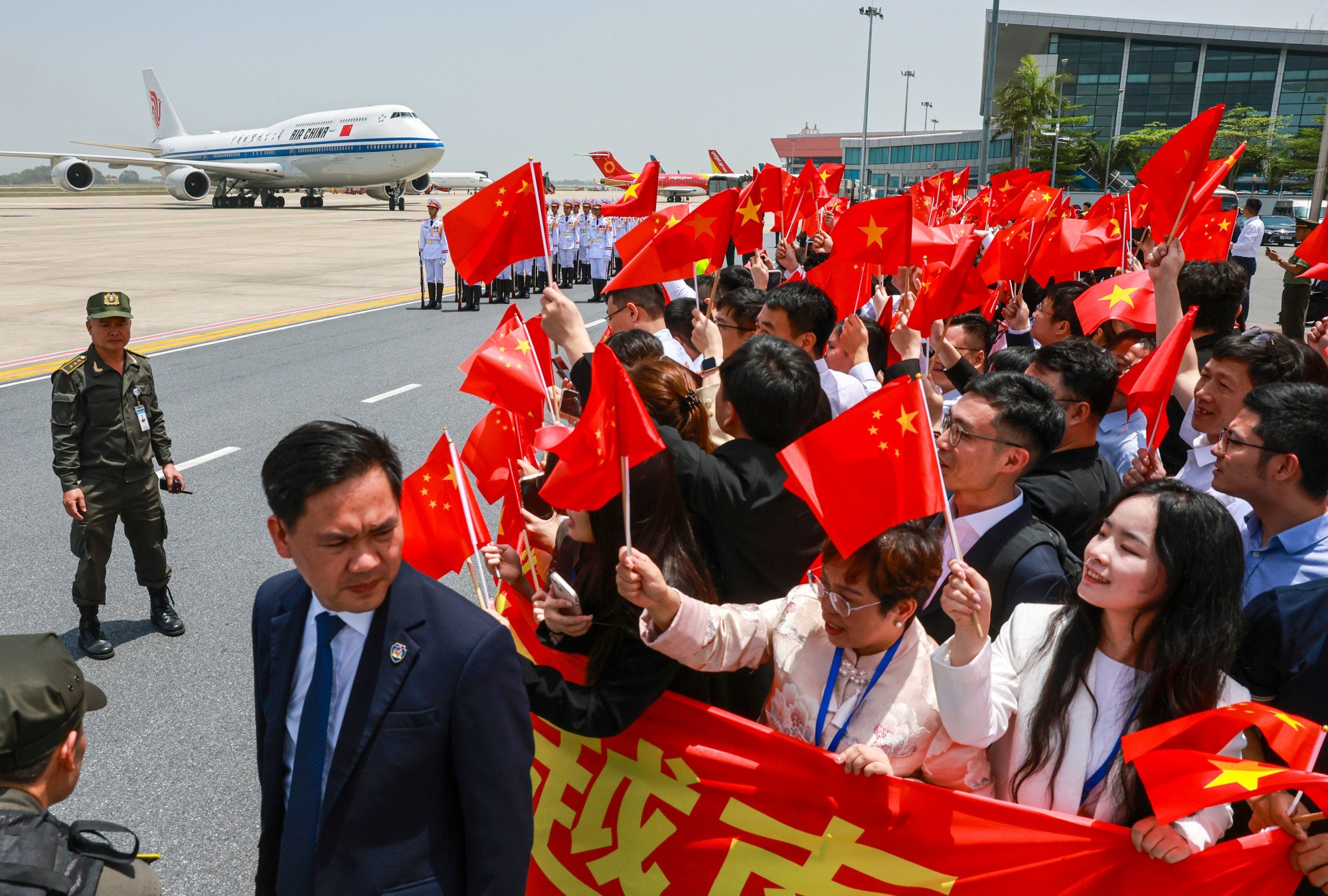To align security interests, China and Asean must close trust gaps
Beijing and Southeast Asian capitals can build confidence by upholding local autonomy over foreign agendas and keeping each other accountable

Last month, Cambodia allowed foreign warships from multiple nations to access its Ream naval base in a clear bid to show it is not merely a Chinese outpost. A Vietnamese gunboat docked on April 27, following the arrival of two Japanese minesweepers after Cambodia inaugurated the upgraded facility. Russian naval vessels also docked at Ream during a visit that began in late April.
The Phnom Penh Post reported that Cambodian Prime Minister Hun Manet “welcomes requests from all nations” to dock and conduct joint activities there. Hosting Vietnamese, Russian and Japanese ships can help fend off presumptions that the base is exclusively Chinese. It is also in line with Beijing’s professed vision of an inclusive regional security framework.
In April, just before President Xi Jinping’s Southeast Asian tour, Beijing outlined a new security doctrine at a conference on periphery diplomacy. The framework echoes Xi’s remarks in November 2024 when he said, “It is for the people of Asia to run the affairs of Asia.”
On visits to Vietnam, Malaysia and Cambodia, Xi cast China as a stable partner committed to resisting external “unilateral bullying” – a rebuke of US trade policies – and to “safeguard our shared Asian home”.
Beijing’s diplomatic signals also evoke the ambitions of its Global Security Initiative – a “vision of common, comprehensive, cooperative and sustainable security” and a commitment to resolving disputes through peaceful dialogue. In particular, China reiterated its official position that South China Sea disputes “should be resolved peacefully by sovereign states directly concerned”.
For this vision to translate into lasting trust, China must lead with openness, consistency and a commitment to multilateral dialogue.
Over the past several years, China has supported alternatives to confrontational bloc politics. Through the Global Security Initiative and its diplomacy with Asean, Beijing has pushed back against the notion of exclusive alignments and instead promoted regional mechanisms where disputes can be managed through peaceful consultation.
The symbolic Ream visits fit within this framework. The fact that Cambodia, a close Chinese partner, has made the base available to other countries shows that China does not seek to dominate but to enable regional capacity-building.
Yet, this vision continues to face scepticism. Some countries like the Philippines remain wary of Beijing’s intentions in the South China Sea, where overlapping claims and military deployments create friction.
These concerns are not baseless, but neither are they intractable. China has said it does not seek hegemony and that disputes should be resolved bilaterally, without interference from outside powers. It has affirmed Asean centrality and taken part in code of conduct negotiations.
It is not China’s rhetoric that is causing problems, rather, the lingering trust gap due to past tensions and the sheer weight of China’s growing influence.
That gap, however, is not insurmountable. Trust-building in a region as complex as Southeast Asia must be mutual. Just as China is being asked to clarify its strategic intent and respect the sovereignty of its neighbours, so the Association of Southeast Asian Nations must also avoid leaning too heavily on outside actors in ways that fuel regional polarisation.
Strengthening defence ties with the United States may seem like prudent balancing, but it can also risk turning Southeast Asia into a theatre of great-power rivalry.
Moreover, China and Asean are becoming more economically interdependent through projects under the Belt and Road Initiative, such as the Jakarta-Bandung high-speed railway and East Coast Rail Link. These initiatives are not simply about influence; they represent shared stakes in regional development. The question is how to make them a platform for broader trust in the security realm.

Here again, Cambodia offers a noteworthy example. Its engagement with China has not prevented it from welcoming other partners. In fact, it shows that Chinese support can coexist with broader regional cooperation. This is what a mature and inclusive security architecture looks like, one where no single power dominates.
For its part, China can continue to build trust by deepening participation in multilateral exercises and dialogue. It has already taken steps through its participation in the Asean Defence Ministers’ Meeting Plus framework and disaster relief cooperation. More such initiatives, especially in non-combat areas such as anti-piracy or humanitarian operations, can strengthen practical cooperation and lower tensions.
Additionally, enhancing transparency around its military modernisation, including clearer articulation of the role of overseas bases and its naval posture, would go a long way towards reassuring sceptical neighbours.
Southeast Asian states must also be clear about their strategic intentions. Vietnam, for example, has been open about its ties with both the US and Russia. This clarity helps manage perceptions and avoid escalation. If all parties are transparent, miscalculations can be minimised. Mistrust in the region often stems from ambiguity about claims, alliances and intentions.

The Asean-China dialogue mechanism remains the best platform to institutionalise this shared responsibility. Progress on code of conduct talks, while slow, must remain a priority. China has reportedly expressed a commitment to a binding agreement. If so, Asean should hold China to that standard while moving forward in good faith.
It is also worth noting that Asean’s desire to maintain strategic autonomy aligns closely with China’s own rejection of bloc politics. The goal should not be to pull Asean closer to China or push it away from other powers, but to ensure that Southeast Asia remains a region where no outside force, however well-meaning, can override the choices of regional actors.
China’s vision is not a threat but an opportunity to anchor regional security in local agency rather than foreign agendas.